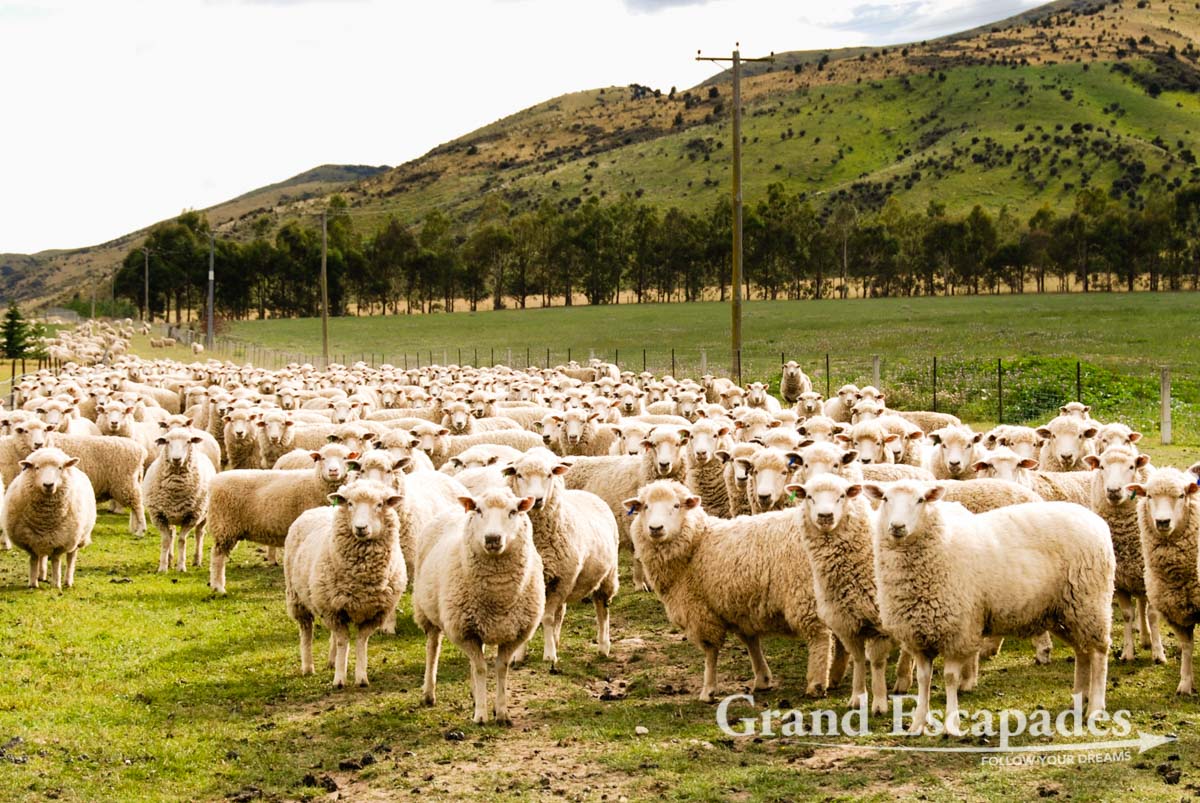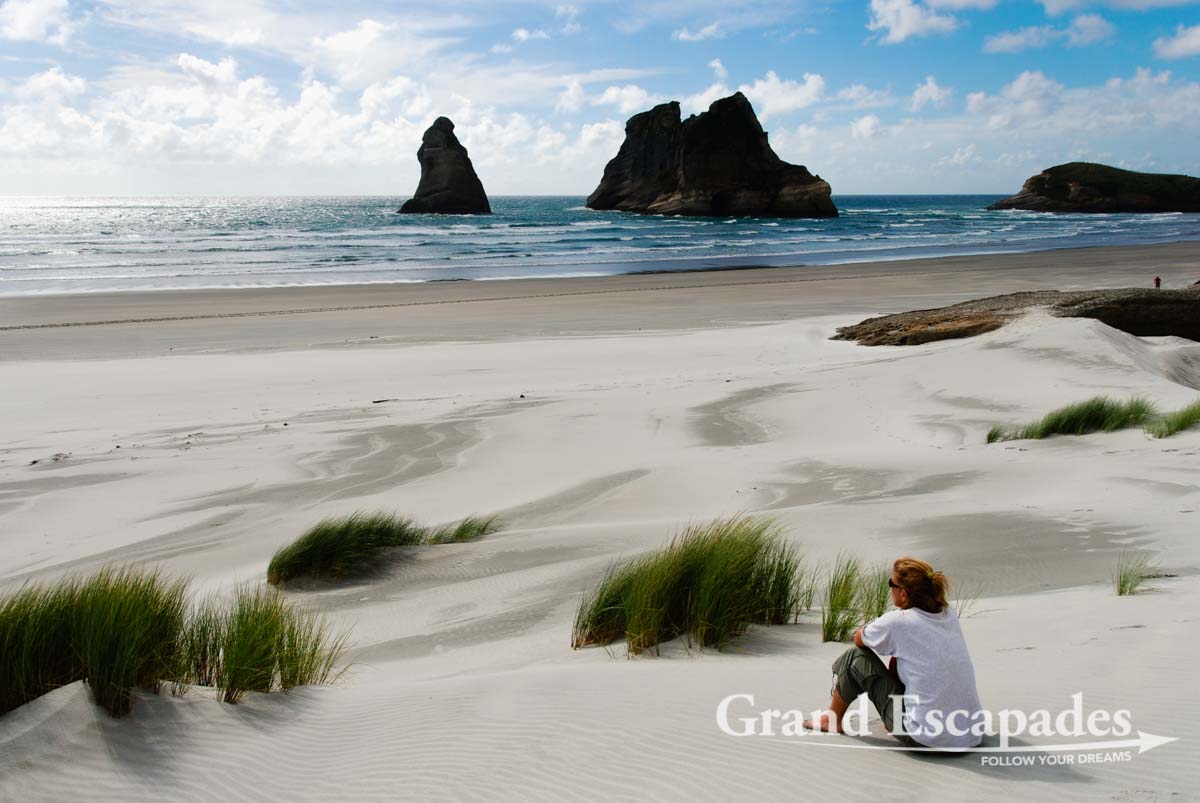
“Grand View” Farm: 700 hectares, 3.500 sheep & 250 deer! And Colin is managing the whole alone… South Island, New Zealand
Among the many interesting things we learned about farming, one blew our mind: New Zealand farmers do not receive any subsidies from their government anymore. Needless to say that they are not happy that these eventually ran out, but for us it was the living proof that the criticism of the European Union’s farming policy is more than justified.
Citizens of the European Union indeed finance overproduction with hundreds of billions of Euros. The consequences are appalling: crops being destroyed, fields being left uncultivated or cheap European Union exports destroying the local economy in developing countries, especially Africa.
Other differences we detected were the size of the farms and the fast changing style of farming. If we thought a farm with 700 hectares, 3.500 sheep & 250 deer was something big, well, how about one with 20.000 sheep?
When the prize for lamb was going down 10 years ago, many farmers turned to raising deer, something we had never heard of before. But also the prize for deer is now on the decline. For lamb the current development is even worse: this is no longer a profitable business except for a few very big farms: a lamb now sells for 45 NZ Dollars but it costs 52 NZ Dollars to raise it! The smaller the farm, the higher the deficit will run…
Some farmers are therefore turning to growing winter crops and make an income by providing grazing grounds for cattle trucked in (!) from the Otago Country in the southeast of New Zealand for about 10 weeks during the winter.
Another big issue is water, which has even reached a country that has plenty of this resource. Farmers have to prove that they use the water taken from rivers very efficiently. Although various intelligent technologies have been developed over the years, the most efficient one seems to be those huge machines, hundreds of meters wide that irrigate the fields and work fully automatically. These “monsters” need perfect conditions in their working diameter, so all stones have to be removed from the ground and all trees cut down, which seemed to us a bit controversial.
Also amazing is the wide range of fruits and vegetables produced in New Zealand, which becomes evident when shopping in the gigantic American-style supermarkets, with equally freezing temperatures inside.





